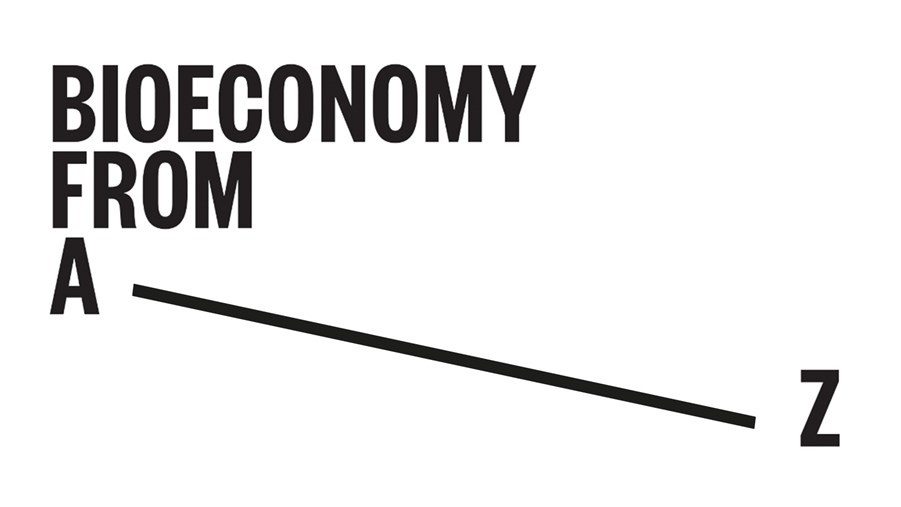
Here are the important keywords you would like to know to speak the bioeconomy tongue.
Active forestry
The better we manage our forests the better they grow. Active and sustainable forestry entails replanting new forests for future harvesting. This is positive for the environment since young, growing trees absorb more CO2 than mature ones.Reference: SLU
Bioeconomy
An economy in which the basic building blocks of growth are based on raw materials from the forest, land and sea instead of fossil and other nonrenewable materials. By living bioeconomically, we can reduce our carbon footprint and steward the Earth's resources in a more sustainable way.
Circular bioeconomy
The bioeconomy is circular. Wood fibre, a renewable raw material, is part of the carbon cycle that starts with photosynthesis. The fibre can be recycled up to seven times. Reference: Ellen MacArthur Foundation
Deforestation
This is a global problem. Forest regrowth in Europe has increased in recent decades and continues to do so thanks to responsible forest management. A total of 43% of the land area in the EU is covered by forests today. In an effort to end deforestation globally, the UN has adopted the New York Declaration on Forests with the aim of halving deforestation by 2020 and ending it completely by 2030.Reference: CEPF
Economic sustainability
The forest sector contributes to economic growth and a more sustainable society at the same time. The economic weight of the forest sector in the EU as measured by gross value added, was equivalent to EUR 111 billion or 5.1% of the manufacturing total in 2016.
Fuels
Residues from forestry and the forest industry are an important, renewable source of bioenergy for industry and society as a whole. In Sweden, efforts are presently being made to scale up production of biobased transportation fuel.
Global warming
The objective of the Paris Agreement is to minimize global warming to two degrees, and preferably 1.5 degrees. To achieve this, we need to reduce fossil-based emissions and invest in green industries. Reference: The Swedish Government
Hemicellulose
A tree largely consists of hemicellulose, cellulose and lignin. When separated from each other, they demonstrate completely different properties, which we can use to create new materials. For example, we can make a soft plastic-like material from hemicellulose. Reference: Rise
Innovation
Research and innovation is crucial in achieving the vision of a biobased society. Within the EU, we need to invest more in order to turn good ideas into new products, and reach out to the world's markets. Reference: European Commission
Jobs
The forest sector in the EU employs close to 3 million people, mostly in jobs in rural areas. Reference: European Commission
Key concern
Ban Ki Moon stresses the fact that the climate is a key concern. "We are the first generation that can end poverty, the last that can end climate change." Reference: UN
Litter
Cardboard boxes, napkins and paper bags. If not recycled or used for energy production, forestbased products such as these find their way back to the cycle of nature by decomposing, unlike fossil-based materials.
Mitigate climate change
It is estimated that EU forests and the forest sector currently contribute an overall climate change mitigation impact of about 13% of total EU emissions. This includes the carbon sink function as well as the carbon store function of wood-based products. Reference: EFI
Nanocellulose
This transparent gel from wood cellulose can be used as a texture agent in foodstuffs, an emulsifier in paints, a biobased barrier in drink cartons and insulation in buildings, for example. Reference: Rise
Oil
Everything you can make from oil, you can make from wood too. Forest-based raw materials have amazing properties that make them as hard as steel or as malleable as plastic. Reference: Rise
Pulp
Wood pulp is produced in different qualities depending on what product it is used for, for example paper, cardboard and tissue, hygiene products or textiles.
Quality material
Wood is a quality, sustainable material that has been used to build housing and infrastructure for centuries. One of the world's oldest, still-standing wooden buildings is found in Japan. Construction year: 710. Reference: Unesco
Resource scarcity
As the population of the world grows, we need to make smarter use of our resources. The bioeconomy comprises those parts of the economy that use renewable resources to produce products, services and energy.
Substitution effect
Through substitution, forest-based products can reduce the use of fossil-based and other non-renewable feedstocks. Unlike fossil fuels, bioenergy does not result in extra carbon being released into the atmosphere.
Time to act
The UN's global goals for sustainable development will put an end to extreme poverty, inequality and climate change by 2030. But only if we fight for it! Reference: UN
UN Framework Convention on climate change
IPCC IV Assessment report: "In the long term, a sustainable forest management strategy aimed at maintaining or increasing forest carbon stocks, while producing an annual sustained yield of timber, fibre or energy from the forest, will generate the greatest sustained mitigation benefits." Reference: IPCC
Virgin fibre
Or fresh fibre as it is more commonly known, is a part of the circular bioeconomy and can be recycled up to seven times. Wood fibre is also part of another cycle, the carbon cycle. It is a longterm, growing resource if well-managed.
Wooden buildings
Multistorey wooden buildings are on the rise. Apart from being beautiful, they are climate-friendly and research shows that wooden interiors can reduce stress and increase well-being. Reference: Sylvia Haus
Xylitol
Also known as birch sugar, xylitol is a healthy, natural alternative to sugar. It has basifying properties and is used in toothpaste to prevent dental decay. Reference: Bioeconomy.fi
Younger generations
If we want our planet and its resources to last for future generations we must act now to stop climate change. At the heart of all sustainability work is the aspiration that future generations should have the same access to natural resources as we have today.
Zero emissions
Sweden has passed legislation that legally binds the country to reach net-zero emissions by the year 2045. Will the EU follow in Sweden's footsteps and set a zeroemissions goal too?
